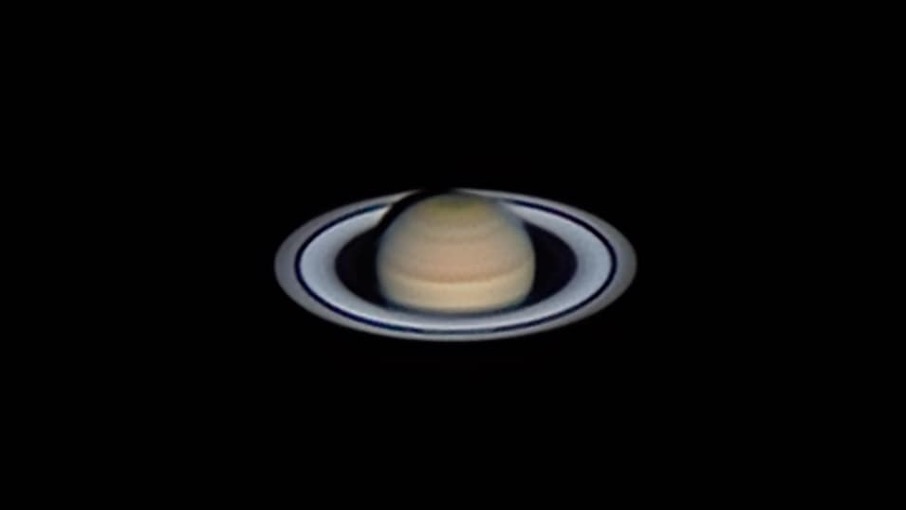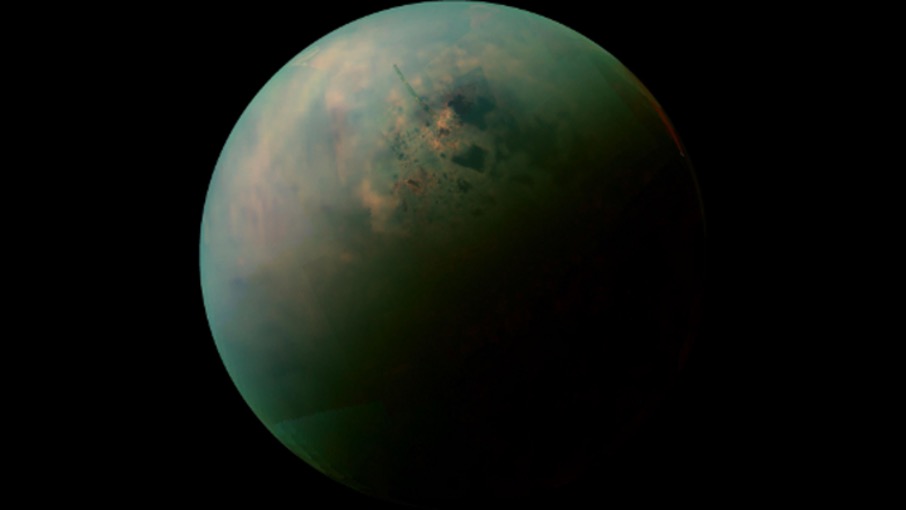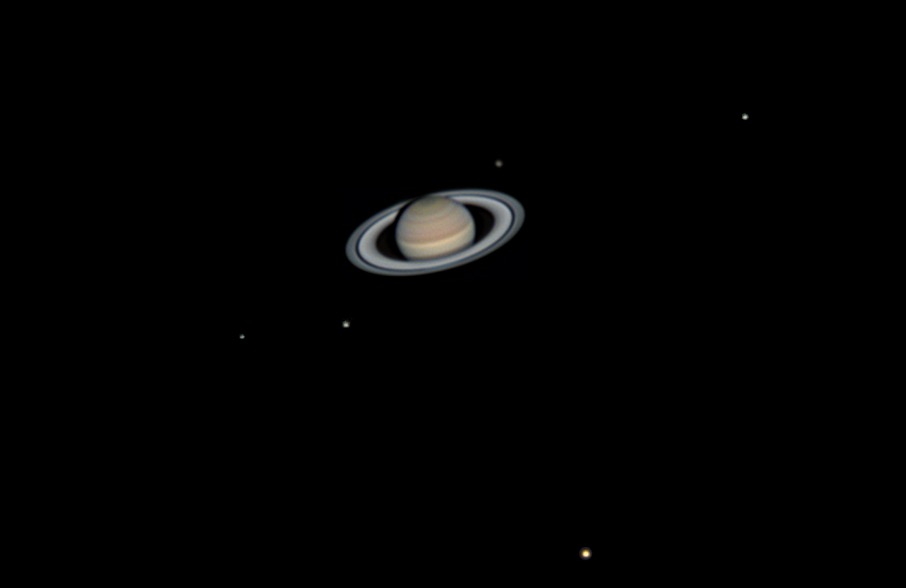Saturn - Lord of the Rings and King of the Moons
Ever since its discovery, the sixth planet of our solar system has been a worthwhile and impressive observation object thanks to its famous rings.
 Saturn with its ring system (Photo by Carlos Malagón, Spain in September 2019 on an Omegon Pro RC 304, ADC and the veLOX 224C)
Saturn with its ring system (Photo by Carlos Malagón, Spain in September 2019 on an Omegon Pro RC 304, ADC and the veLOX 224C)Although the ring system was already observed by astronomers in the 17th century, it was the Voyager I and II missions that were first able to provide detailed impressions of the gas giant. The breakthrough in the research of the ring planet came in 2004 with NASA's Cassini-Huygens space probes which, until 2017, systematically examined the planet, its rings, and a number of its moons, sending spectacular photos that revealed valuable details.
The ring system is just one aspect, which I will discuss in more detail later. The sheer number of Saturn’s moons has always been astonishing. Just like Jupiter, Uranus and Neptune, its size and mass meant that its gravity was strong enough to gather a multitude of different satellites around it. Some of these moons are even within the rings and so were hidden from view until recently.
It was only thanks to the Voyager II and Cassini missions that these celestial bodies could eventually be discovered. Often they are no larger than the average asteroid. Other moons, on the other hand, orbit far outside the ring planet – among them Titan, the second largest satellite in the solar system after Jupiter’s Ganymede. Both of these moons have a diameter larger than that of the planet Mercury!
 Saturn's moon Titan (Photo: NASA / JPL University of Arizona)
Saturn's moon Titan (Photo: NASA / JPL University of Arizona)For a long time, Jupiter was also considered to be the planet with the largest number of moons in our solar system, namely 79. The four Galilean moons Ganymede, Callisto, Europa and Io are especially famous. They were first identified in 1610 and are named after the man who discovered them.
But Jupiter was relegated from first to second place in 2019...
Saturn is now King of the Moons
In 2019, it was announced that as many as 20 new satellites were discovered around Saturn – thereby increasing the total number of its moons to 82 and the Lord of the Rings dethroned Jupiter from the number 1 spot. None of the newly discovered satellites are any larger than around 5km in diameter and so are no more than large pieces of rock. Despite their similarity to asteroids, however, they are considered moons, as they move in fixed orbits around the gas planet. However, 17 of them have retrograde orbits, i.e. they move in the opposite direction to Saturn's own rotation. They were only recently discovered because of their small size and their much greater distance from Saturn.
Unlike the gas planet Saturn itself, which, apart from a solid ice-silicate core, consists essentially of hydrogen, helium, methane and ammonia, its moons are rock-shaped - just like our own Moon. The largest of these are Titan, Rhea, Dione, Tethys and Iapetus with diameters ranging from 1,100 to over 5,000 kilometers. A number of thes moons obit somewhat chaotically around the planet. The two moons Janus and Epimetheus, for example, have orbits that follow almost exactly the same path in the shape of the figure 8, which they switch every four years like a train on points. Other moons have retrograde orbits around Saturn or follow highly elliptical orbits. But there are also moons that are hiding within the ring system, such as Daphnis, which was detected within the so-called Keeler Gap in 2005. Daphnis and seven other similar satellites within the rings are called Shepherd Moons because they organise the components (ice and rock particles) of the rings and divide them into individual rings (Keeler Gap, Cassinian division, A ring, F ring, etc).
Recent studies have also shown that the ring system itself is held together by the gravitational force of the shepherd moons. The ring system is very thin in comparison: with a thickness of just 10 to 90 metres and an area of almost 1 million kilometres, this system surrounds the planet at its equatorial plane. Now, mainly thanks to the Cassini probe, we know that there are more than 100,000 individual rings! Some of them consist of only dust and the smallest rock or ice particles.
 Saturn umringt von den Monden Enceladus, Tethys, Dione, Rhea und Titan (Foto von James Bates, Berlin im August 2019 an einem Celestron Nexstar 8SE, 2x Barlow, ZWO ADC, IR/UV Sperrfilter, ZWO ASI 224MC)
Saturn umringt von den Monden Enceladus, Tethys, Dione, Rhea und Titan (Foto von James Bates, Berlin im August 2019 an einem Celestron Nexstar 8SE, 2x Barlow, ZWO ADC, IR/UV Sperrfilter, ZWO ASI 224MC)